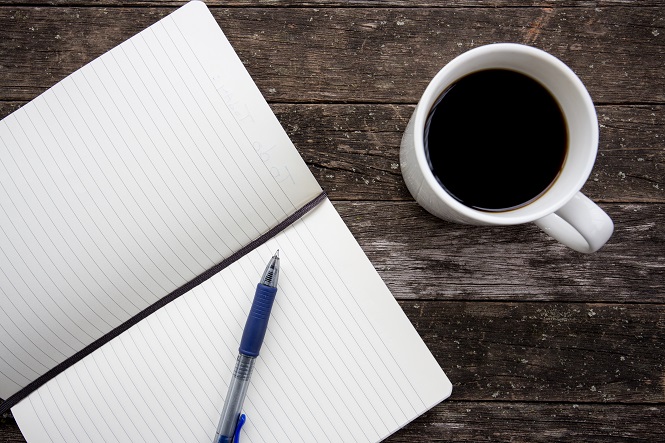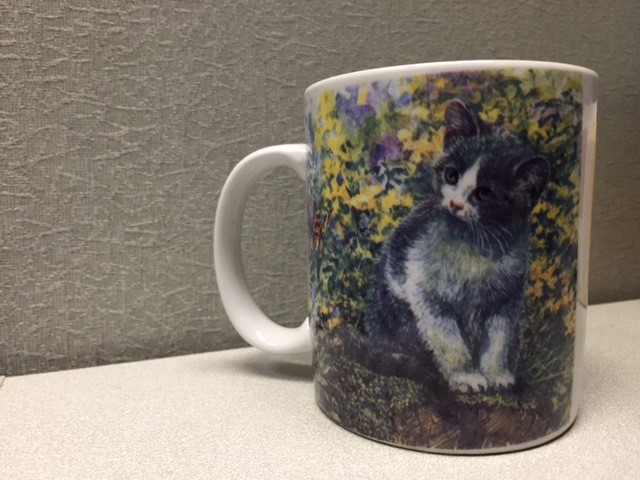
For those of us working a 9-to-5 job (or more), caffeine is not just a nice way to wake-up, it is our very lifeblood. I mean, I don’t want to sound like some sort of addict. Of course, I’d rather quietly be one in the shadows of my kitchen in the morning. But alas, I am writing for this blog, and you’re all bound to find out eventually that there are times where I depend on caffeine. In fact, it’s aiding me in writing this post. I’m sitting in Starbucks as we speak with a large black coffee.
I won’t waste my time writing an article defending how frequently I drink caffeinated beverages; I’m merely stating that it’s ever present in my life and the lives of a great many others. It’s a giant market.
A 2012 study by the Small Business Development Center found that coffee shops were a 10 billion dollar market. The same study also concluded that there were about 183 million coffee drinkers and 173 million tea drinkers in the U.S. alone.
From a productivity standpoint, holy smokes! That’s the potential for a lot of work getting done a whole lot faster. But from an environmental impact perspective, that’s also the potential for a lot of waste. The analyst in me starts to do the math. Just thinking about paper cups: If 183 million coffee drinkers and 173 tea drinkers drink one cup of their choice beverage a day, that’s the potential for 356 million cups of liquid energy a day. That’s also the potential for 356 million disposable paper cups being utilized. But what choice do we have?
Most of us have morning routines that don’t provide ample amounts of free time. We have long commutes. We have to get dressed and groom ourselves to look presentable. We might even have kids to get on the bus. Inventions like a Keurig or the growth of Starbucks and other coffee chains have embedded themselves in our routines. They have granted us a glorious extra 10 minutes of sleep prior to starting the day. For some, that is priceless.
So, how do we make environmentally sound decisions within the shackles of our busy schedules? That’s a complicated question that doesn’t have just one answer. We do what we can. So here are some tips that I like to utilize.
Find a reusable cup/mug

I say “find” because you don’t necessarily have to run out and buy one. I was able to find this stylish yet purrr-fectly functional kitten mug just lying around my office.
Although, if you are in the market for a green mug for your green tea, there are
plenty of options. A lot of these are BPA-free and made from recycled plastic. So if you’re going to buy something new, it might as well buy something environmentally friendly.
Re-use your cups/mugs
Just using a cup more than once is going be beneficial to the environment. Our coffee consumption now includes disposable coffee cups, cardboard insulators to protect your hands from excessively hot or cold temperatures,
plastic sticks to stop your coffee from spilling and any number of sugar packets, creamers or other add-ins. You’re doing the world a large favor by just using your trusty kitten mug, since all these coffee accessories aren’t exactly “necessary.” Even refilling your Starbucks cup can put you extra money in your pocket and extra coffee in your belly. The company even has programs like the
Starbucks Rewards program that incentivizes using your cup twice, as well as sitting down and enjoying your beverage.
Re-think the Keurig
Although it is a useful coffee making machine, it’s no secret that those K-Cups have a significant environmental impact. Even the company has acknowledged this and plans to have K-Cup packs that are 100 percent recyclable by 2020. In the meantime, you can take some steps to help the environment. There are some
reusable K-Cup options that will allow you to refill the little plastic containers with your favorite ground coffee.
Drink your coffee black
Don’t be afraid to drink your coffee or tea black. There are
a lot of benefits from this, including health-related ones. But speaking from an environmental point of view, if you drink your coffee black in a reusable mug, you are ruling out creating a lot of additional waste. No sugar packets or plastic sticks or cardboard needed.
“Season” your coffee mug
The last part of this is bound to be controversial, but bear with me. It came up a lot in my research and also in talking to people about this topic. I have to be clear I am not necessarily advocating for this, nor is 1-800-Recycling.com, but there seems to be a rumor of “seasoning” your coffee mug. Much like you might
season a brand new cast iron pan, there are people who swear by seasoning their coffee mugs.
The theory is that you don’t need to wash your coffee or tea mug after every single use if you’re drinking it black. Supposedly if you aren’t adding milk or sugar or other “add-ons” that can spoil or grow bacteria if left out, then you should be fine to reuse your mug a few times. Some people simply rinse out their mug between uses rather than spending a long time scrubbing it. I myself take part in this with my tea and coffee mugs. My mug might go 1-2 weeks without being washed, but I am drinking tea out of it 4-5 times a day and only black. The claim from one man on the internet is that he has
seasoned a mug for 4 years. He also provides some history of this practice and claims it is from the Navy. I can’t comment on any health issues that may come from this, but the practice seems to certainly be more common than I would have ever imagined.
However you may choose to drink your caffeine is up to you. But keep in mind how often you drink it and think about how it impacts the environment. Some of these practices will still allow you to get your extra sleep and may not require changing up your habits routines too much.
 For those of us working a 9-to-5 job (or more), caffeine is not just a nice way to wake-up, it is our very lifeblood. I mean, I don’t want to sound like some sort of addict. Of course, I’d rather quietly be one in the shadows of my kitchen in the morning. But alas, I am writing for this blog, and you’re all bound to find out eventually that there are times where I depend on caffeine. In fact, it’s aiding me in writing this post. I’m sitting in Starbucks as we speak with a large black coffee.
I won’t waste my time writing an article defending how frequently I drink caffeinated beverages; I’m merely stating that it’s ever present in my life and the lives of a great many others. It’s a giant market. A 2012 study by the Small Business Development Center found that coffee shops were a 10 billion dollar market. The same study also concluded that there were about 183 million coffee drinkers and 173 million tea drinkers in the U.S. alone.
From a productivity standpoint, holy smokes! That’s the potential for a lot of work getting done a whole lot faster. But from an environmental impact perspective, that’s also the potential for a lot of waste. The analyst in me starts to do the math. Just thinking about paper cups: If 183 million coffee drinkers and 173 tea drinkers drink one cup of their choice beverage a day, that’s the potential for 356 million cups of liquid energy a day. That’s also the potential for 356 million disposable paper cups being utilized. But what choice do we have?
Most of us have morning routines that don’t provide ample amounts of free time. We have long commutes. We have to get dressed and groom ourselves to look presentable. We might even have kids to get on the bus. Inventions like a Keurig or the growth of Starbucks and other coffee chains have embedded themselves in our routines. They have granted us a glorious extra 10 minutes of sleep prior to starting the day. For some, that is priceless.
So, how do we make environmentally sound decisions within the shackles of our busy schedules? That’s a complicated question that doesn’t have just one answer. We do what we can. So here are some tips that I like to utilize.
For those of us working a 9-to-5 job (or more), caffeine is not just a nice way to wake-up, it is our very lifeblood. I mean, I don’t want to sound like some sort of addict. Of course, I’d rather quietly be one in the shadows of my kitchen in the morning. But alas, I am writing for this blog, and you’re all bound to find out eventually that there are times where I depend on caffeine. In fact, it’s aiding me in writing this post. I’m sitting in Starbucks as we speak with a large black coffee.
I won’t waste my time writing an article defending how frequently I drink caffeinated beverages; I’m merely stating that it’s ever present in my life and the lives of a great many others. It’s a giant market. A 2012 study by the Small Business Development Center found that coffee shops were a 10 billion dollar market. The same study also concluded that there were about 183 million coffee drinkers and 173 million tea drinkers in the U.S. alone.
From a productivity standpoint, holy smokes! That’s the potential for a lot of work getting done a whole lot faster. But from an environmental impact perspective, that’s also the potential for a lot of waste. The analyst in me starts to do the math. Just thinking about paper cups: If 183 million coffee drinkers and 173 tea drinkers drink one cup of their choice beverage a day, that’s the potential for 356 million cups of liquid energy a day. That’s also the potential for 356 million disposable paper cups being utilized. But what choice do we have?
Most of us have morning routines that don’t provide ample amounts of free time. We have long commutes. We have to get dressed and groom ourselves to look presentable. We might even have kids to get on the bus. Inventions like a Keurig or the growth of Starbucks and other coffee chains have embedded themselves in our routines. They have granted us a glorious extra 10 minutes of sleep prior to starting the day. For some, that is priceless.
So, how do we make environmentally sound decisions within the shackles of our busy schedules? That’s a complicated question that doesn’t have just one answer. We do what we can. So here are some tips that I like to utilize.
 I say “find” because you don’t necessarily have to run out and buy one. I was able to find this stylish yet purrr-fectly functional kitten mug just lying around my office.
Although, if you are in the market for a green mug for your green tea, there are plenty of options. A lot of these are BPA-free and made from recycled plastic. So if you’re going to buy something new, it might as well buy something environmentally friendly.
I say “find” because you don’t necessarily have to run out and buy one. I was able to find this stylish yet purrr-fectly functional kitten mug just lying around my office.
Although, if you are in the market for a green mug for your green tea, there are plenty of options. A lot of these are BPA-free and made from recycled plastic. So if you’re going to buy something new, it might as well buy something environmentally friendly.